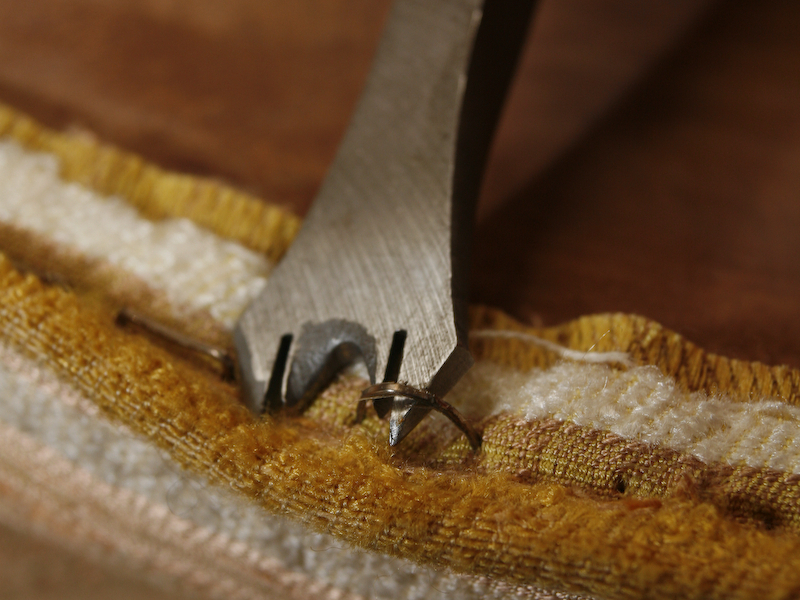Dining chairs are an integral part of good times. Where there’s dinner, wine, and company, there are chairs. But dining chairs are notoriously uncomfortable: no fun for the buns. With simple modifications, that can be changed. Plywood slip seats can be altered to allow a bit of flex, a tad of padding, and a big difference in comfort. At your next dinner party, don’t be surprised if your guests won’t leave!
This article teaches you the basics of upholstery, and our online supplement includes additional techniques for softening that slip seat (see http://craftzine.com/07/101). After this project you’ll be ready to move on to an armchair or chair with a loose cushion.
Upholstering with tacks is the most traditional method, and the least expensive for startup costs. You just need an upholsterer’s brass tack hammer with a magnetic tip, and tacks. Any stapling described in this article can be accomplished with tacks. (Or you can use a pneumatic upholstery staple gun, which is easy on the wrists, fast, and gentle on the fabric.)
There’s a lot of gorgeous fabric, but it’s not all that appropriate for upholstery. Upholstery fabric should be a weave, never a knit, and should have very little stretch along the grain. It should be sturdy enough to withstand having staples put in and ripped out. Jacquards, brocades, denims, and heavyweight woven wools are all good choices.



























